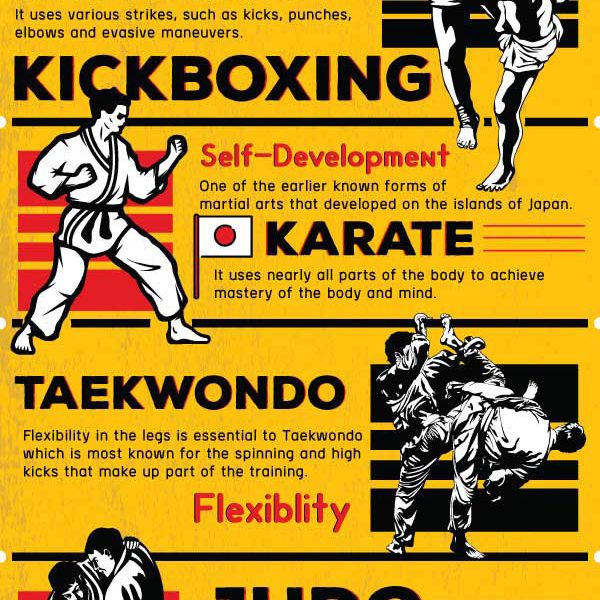Introducing The Variety Of Martial Arts Disciplines: An Overview From Karate To Taekwondo
Introducing The Variety Of Martial Arts Disciplines: An Overview From Karate To Taekwondo
Blog Article
Web Content Author-Carlson Weiner
Are you tired of sensation bewildered by the huge globe of martial arts? With numerous designs to select from, it can be simple to get lost in a sea of strikes, kicks, and strange names. Yet concern not!
This discussion will certainly demystify the various fighting styles designs, taking you on a trip from the effective strikes of Karate to the dynamic kicks of Taekwondo. Prepare to reveal the beginnings, strategies, and approaches behind these ancient art kinds.
So, tighten your belt and prepare to embark on an enlightening exploration into the exciting world of fighting styles.
Beginnings of Martial Arts Styles
The origins of martial arts styles can be mapped back to old human beings and their need for self-defense and combat strategies. Throughout history, various societies established their very own special approaches of fighting, each with its very own set of strategies and approaches.
In China, for example, martial arts styles such as Martial art and Tai Chi were established as a means of self-defense and boosting physical and psychological well-being.
In Japan, the samurai warriors produced styles like Martial arts and Judo, concentrating on self-control, accuracy, and proficiency of the body.
In a similar way, in Korea, Taekwondo emerged as a fighting style stressing high kicks, fast motions, and mental fortitude.
These early worlds laid the foundation for the varied range of fighting styles designs that exist today, each with its own abundant background and social significance.
Methods and Training Methods
To understand fighting styles styles, experts must learn different strategies and training approaches.
Strategies are the particular activities and actions utilized in battle, such as punches, kicks, tosses, and blocks. Various martial arts designs have their own one-of-a-kind set of strategies that experts need to understand with strenuous training.
https://edwinjrxen.eedblog.com/33327480/the-role-of-youth-martial-arts-in-bully-prevention-and-protection vary depending upon the design, yet they typically include a combination of physical fitness, drills, competing, and forms.
Physical fitness is vital to develop strength, flexibility, and endurance. boxing & martial arts help specialists refine their methods and improve their speed and accuracy.
Sparring allows professionals to exercise their techniques in a controlled, reasonable setting. Forms, likewise referred to as kata, are ironclad sequences of movements that assist specialists establish muscle memory and focus.
Viewpoints and Principles
Discovering the viewpoints and concepts of martial arts styles can provide you with a deeper understanding of your picked discipline. god of martial arts has its own one-of-a-kind approach and collection of assisting principles that shape the method it's practiced.
As an example, Karate stresses discipline, respect, and self-constraint. It shows experts to focus their minds and bodies, enabling them to safeguard themselves while maintaining a sense of internal peace.
On the other hand, Taekwondo positions a strong focus on rate, agility, and adaptability. Its principles are rooted in the tenets of politeness, stability, perseverance, self-discipline, and resolute spirit.
Final thought
Now that you've discovered the beginnings, strategies, and approaches of various fighting styles styles, you have a much deeper understanding of these ancient self-controls.
Picture a young karate trainee, experimenting steadfast resolution and emphasis, breaking through boards with a powerful strike.
Their journey showcases the commitment and toughness called for to grasp a fighting style, reminding us that with self-control and determination, anything is possible.
